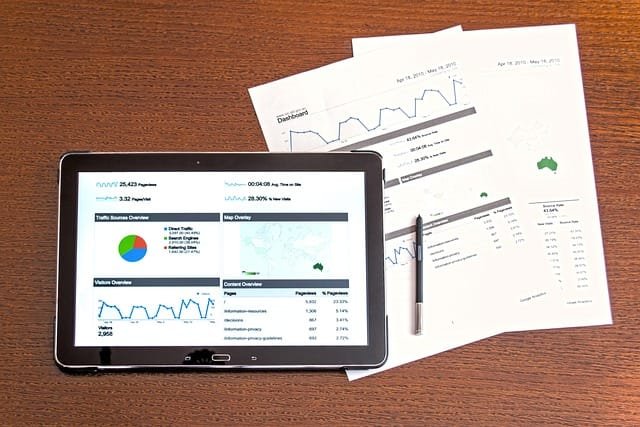This Article has been revised, edited and added to, by Poulomi Chakraborty.
- Understanding the Last-Minute Traveler
- Optimize for Mobile Search
- Use Urgency in Meta Descriptions and Titles
- Utilize Google Ads' Countdown Feature
- Actionable Steps:
- Integrating Countdowns with Storytelling for Enhanced Engagement
- Customizing Countdowns for Target Audiences
- Strategic Timing and Scheduling of Countdown Ads
- Beyond the Countdown: Follow-up Strategies
- Analytics and Continuous Improvement
- Unlocking the Full Potential of Countdowns in Google Ads
- Create Dedicated Landing Pages for Last-Minute Deals
- Leverage Email Marketing with Real-Time Alerts
- Actionable Steps:
- Crafting Emails That Captivate from the Subject Line
- Integrating Interactive Elements into Emails
- Segmenting Your Audience for Tailored Messaging
- The Power of A/B Testing in Email Campaigns
- Follow-up Strategies to Re-engage and Convert
- Email Marketing as a Catalyst for Last-Minute Bookings
- Engage Users with Push Notifications
- Actionable Steps:
- Crafting Push Notifications That Demand Attention
- Leveraging Geo-Targeting for Hyper-Relevant Alerts
- Utilizing Behavioral Data for Customized Offers
- Engaging Users Beyond the Deal
- Navigating the Fine Line of Frequency and Relevance
- Transforming Push Notifications into Powerful Engagement Tools
- Conclusion: Navigating the Rapid World of Last-Minute Travel SEO
In a world dominated by careful planners and early birds, there’s an undercurrent of travelers who thrive on the adrenaline of spontaneity. These are the wanderers who decide on a Friday they want to be in a different city by Saturday, the vacationers who pack a bag and set off with no set destination, and the adventurers who see a last-minute deal too good to pass up. They are the spontaneous travelers, and for travel businesses, they represent a vast untapped market.
However, to capture this market effectively, travel businesses must master the nuances of SEO strategies specifically designed for last-minute travel deals. With the right approach, they can ensure their offers get seen by the right audience at the exact moment they are most inclined to make a booking. This article delves deep into these SEO techniques, offering insights and actionable steps to connect with those seeking last-minute adventures.
Understanding the Last-Minute Traveler

Before diving into specific SEO strategies, it’s essential to understand the motivations and behaviors of the last-minute traveler. Unlike the meticulous planner who might research destinations months in advance, the spontaneous traveler operates on a different timeline. They are driven by:
- Urgency: The thrill of a last-minute plan is exhilarating for many. The closer the departure date, the more enticing the deal might seem.
- Value: Last-minute deals often offer significant discounts, making luxury trips more affordable or extending travel budgets further.
- Flexibility: Without a set itinerary or destination in mind, these travelers can quickly adapt to available deals and opportunities.
- Discovery: For some, the unpredictability is part of the charm. They’re open to discovering new destinations based purely on a compelling deal.
Diving Deeper into Psychological Triggers
When tailoring SEO strategies for last-minute travel deals, it’s essential to delve into the psychological triggers that motivate spontaneous travelers. Beyond the thrill of urgency and the allure of value, these individuals often seek a deeper connection with their travel experiences.
They may be motivated by a desire to escape the mundane aspects of daily life or the need to assert control over their schedules by making impromptu decisions. Recognizing these underlying triggers allows travel businesses to craft messages that resonate on a more personal level, thereby enhancing the effectiveness of their SEO campaigns.
Personalization and Predictive Analysis
In an era where data is king, startups must harness the power of analytics and AI to predict and personalize the travel experiences of last-minute travelers. By analyzing past behavior, social media interactions, and search patterns, businesses can anticipate the needs and preferences of their audience. Integrating this level of personalization into your SEO strategy not only improves search rankings but also connects emotionally with travelers. For example, showcasing destinations known for spontaneity or relaxation can catch the eye of those looking to break free from their routine.
Crafting a Story Around Spontaneity
Narrative-driven content has the power to engage and convert like no other. Startups should aim to craft stories around the spontaneity of travel – stories that evoke a sense of adventure and freedom. These narratives should be woven into the fabric of your SEO content, from blog posts and destination guides to video testimonials and social media snippets. By embedding keywords naturally within these stories, your content becomes not only a tool for ranking but also a compelling invitation to the spontaneous traveler.
Emphasizing Emotional Benefits
While practical benefits like discounts and flexible booking options are important, emphasizing the emotional benefits of spontaneous travel can significantly impact your SEO strategy. Highlighting feelings of joy, discovery, and liberation associated with last-minute trips can make your content more engaging and shareable. Content that taps into these emotional triggers can improve both your search engine visibility and your connection with potential travelers, encouraging them to choose your service when the impulse to travel strikes.
Leveraging Social Proof
In the digital age, social proof is a powerful tool for influencing decisions. Encouraging customers to share their spontaneous travel experiences on social media, along with a specific hashtag, can boost your brand’s visibility and credibility. These real-life stories serve as testimonials to the excitement and satisfaction that come with last-minute deals. Integrating these stories into your SEO strategy, perhaps through a dedicated section on your website or as part of your content marketing efforts, can enhance your search rankings and appeal to potential travelers.
A Holistic Approach to Understanding the Last-Minute Traveler
By taking a holistic approach to understanding the last-minute traveler, startups can develop SEO strategies that are not only effective in driving traffic but also in building meaningful connections with their audience.
The key lies in diving deep into the psychological triggers, leveraging data for personalization, crafting compelling narratives, emphasizing emotional benefits, and harnessing the power of social proof.
This strategic and thoughtful approach to SEO for last-minute travel deals positions startups to capture the hearts and minds of spontaneous travelers, turning fleeting impulses into lasting memories and repeat business.
Optimize for Mobile Search

Given the urgency and spontaneity associated with last-minute travel deals, mobile search optimization is crucial. Here’s why:
- Instant Decisions: Spontaneous travelers often make snap decisions on-the-go, and a significant chunk of these decisions happen on mobile devices.
- Location-based Searches: Mobile users often leverage location-based services to find deals close to them, especially if they’re in transit. For instance, someone at an airport might search for last-minute hotel deals at their destination.
Actionable Steps:
- Responsive Design: Ensure that your website is mobile-responsive. This is a primary ranking factor for Google, especially for mobile searches. Ensure fast load times, easily clickable elements, and a smooth user experience.
- Local SEO: Ensure your business is listed on Google My Business and other local directories. Optimize for local keywords such as “last-minute hotel deals in [location]”.
- Use Accelerated Mobile Pages (AMP): AMPs load faster than regular mobile pages, providing a better user experience and potentially boosting your site’s ranking on mobile searches.
Understanding the Mobile User’s Journey
To truly optimize for mobile search, it’s crucial to understand the journey of a mobile user from the moment they feel the urge to travel until they make a booking. This journey often involves multiple touchpoints – from initial inspiration found in a social media post to comparing deals on a mobile app, and finally, making a reservation through a mobile-friendly checkout process.
Each of these steps offers an opportunity for SEO optimization that goes beyond traditional keywords and responsive design. Incorporating schema markup for events, offers, and reviews can significantly enhance your visibility in mobile search results, making your last-minute deals stand out.
Voice Search and Conversational Queries
With the rise of voice search through digital assistants like Siri, Google Assistant, and Alexa, optimizing for conversational queries becomes paramount. Last-minute travelers often use voice search to find quick information while multitasking.
Phrases like “find me a last-minute flight to New York” or “book a hotel room for tonight” are becoming more common. To capture this audience, integrate natural language processing (NLP) into your SEO strategy. This involves optimizing for long-tail keywords that mirror how real people talk and ask questions in conversation, making your content more likely to be found via voice search.
The Role of Visual Search in Travel Decisions
Visual search technology allows users to search using images instead of words. For last-minute travelers, the ability to quickly scan through visuals of potential destinations or accommodations can be a deciding factor.
Optimizing your website’s images for SEO – through alt tags, file names, and surrounding content – can increase your visibility in visual search results. Furthermore, incorporating high-quality, engaging visuals into your site design can capture the attention of those spontaneous travelers who decide based on what they see.
Leveraging Mobile-First Indexing
Google’s mobile-first indexing means the mobile version of your website becomes the primary version used for ranking. This shift underscores the necessity of having a mobile-optimized site that offers a flawless user experience.
Beyond responsive design, consider mobile load times, site structure, and ease of navigation. Implementing AMP (Accelerated Mobile Pages) for your key landing pages, such as those showcasing last-minute deals, can further enhance mobile user experience and search ranking.
Interactive Elements for Higher Engagement
Engagement metrics play a significant role in search rankings. Incorporating interactive elements like 360-degree videos, virtual tours of destinations, or interactive maps can significantly increase the time spent on your site.
For last-minute travel deals, these features can provide the impulsiveness that users are looking for, enabling them to virtually explore a destination before making a quick decision. Ensuring these elements are optimized for mobile devices can improve your SEO while providing a richer user experience.
Crafting a Seamless Mobile Experience
Optimizing for mobile search in the context of last-minute travel deals requires a deep understanding of the mobile user’s journey, an adaptation to emerging technologies like voice and visual search, and the implementation of mobile-first principles.
By enhancing the mobile experience through conversational query optimization, engaging visual content, and interactive elements, startups can significantly increase their visibility and appeal to the spontaneous traveler. This strategic approach to mobile SEO ensures that when the urge to travel strikes, your deals are just a tap away.
Use Urgency in Meta Descriptions and Titles
One of the driving factors for last-minute travelers is the sense of urgency. When creating meta titles and descriptions for your travel deals, it’s essential to convey this urgency.
Actionable Steps:
- Time-Sensitive Phrasing: Use phrases like “Last Chance,” “Book Now,” “Limited Time Offer,” or “Only a Few Seats Left” to convey the urgency.
- Show Real-Time Availability: If possible, integrate real-time seat or room availability within search results. It not only shows scarcity but also reinforces the idea of urgency.
- Highlight Discounts: If a deal offers a significant discount, highlight it in the meta description. For instance: “50% off! Last-minute deal for [destination]. Book now!”
Crafting a Narrative of Immediacy in Meta Elements
The essence of captivating potential travelers with last-minute deals lies not just in stating the urgency but in crafting a narrative that communicates an irresistible call to action. When formulating meta titles and descriptions, it’s pivotal to weave a story that speaks directly to the spontaneous nature of your target audience.
This narrative should encapsulate the exhilaration of impromptu travel, the allure of discovery, and the time-sensitive opportunity at hand.
By embedding these elements into your meta tags, you create an emotional resonance that transcends the mere functional appeal of a travel deal, thus elevating your search engine optimization efforts to the realm of storytelling.
Psychological Triggers in Meta Descriptions
Delving deeper into the psychology of urgency, successful SEO strategies employ carefully chosen words that trigger an immediate emotional response. This involves going beyond generic calls to action, embedding psychological triggers such as “Escape Now,” “Adventure Awaits,” or “Unlock Your Journey.”
These phrases do more than create a sense of urgency; they tap into the innate desire for escape and adventure that defines the last-minute traveler. By strategically incorporating these triggers into your meta descriptions, you not only improve your click-through rates but also align your brand with the deep-seated motivations of your audience.
The Science of Scarcity in Titles
Scarcity is a powerful motivator, especially in the context of last-minute travel deals. However, its effectiveness hinges on the credibility and specificity of the information presented. Titles that mention limited availability should provide concrete details that underscore the legitimacy of the offer.
For instance, “Last 3 Rooms at 40% Off – Book Your Beachside Escape Now” is more compelling than a vague mention of a limited offer. This specificity not only reinforces the urgency but also builds trust with your audience, a critical factor in converting searches into bookings.
Personalization and Localization
In the era of personalized marketing, tailoring your meta titles and descriptions to reflect the user’s location or search history can dramatically enhance the effectiveness of your urgency-driven messaging. For startups, leveraging data to customize meta tags for specific segments of your audience can make your last-minute deals feel uniquely tailored to each potential traveler.
Incorporating elements of localization, such as mentioning the user’s city or a nearby landmark, can further enhance the relevance and appeal of your offers, making them feel like serendipitous opportunities rather than generic advertisements.
Testing and Optimization
The dynamic nature of last-minute travel deals demands a continuous approach to testing and optimization. A/B testing different versions of your meta titles and descriptions can provide valuable insights into what resonates best with your target audience. This iterative process allows you to refine your messaging, ensuring that your use of urgency is not only compelling but also maximally effective in driving bookings.
Tracking the performance of various meta elements through click-through rates and conversion metrics enables startups to fine-tune their SEO strategies in real time, adapting to the ever-changing landscape of traveler behavior and search engine algorithms.
Elevating Urgency Beyond the Conventional
In the competitive realm of last-minute travel deals, the strategic use of urgency in meta titles and descriptions can set your offerings apart. By crafting narratives of immediacy, tapping into psychological triggers, emphasizing scarcity with specificity, personalizing your messaging, and engaging in continuous optimization, startups can transform their SEO efforts into a powerful driver of engagement and conversion.
This nuanced approach not only captures the attention of spontaneous travelers but also establishes a deeper emotional connection, turning fleeting searches into lasting memories and loyal customers.
Utilize Google Ads’ Countdown Feature

While organic SEO strategies are crucial, complementing them with paid advertising can give your deals the visibility they need. Google Ads offers a countdown feature, which is perfect for last-minute travel deals.
Actionable Steps:
- Set Up Countdowns: When setting up your ad, use the countdown feature to show how much time is left for the deal. This dynamic feature updates in real-time, adding to the sense of urgency.
- Geo-targeting: Use geo-targeting to display your ads to users in specific locations. For instance, if you have a last-minute deal for flights from New York to Miami, target users in the New York area.
- Optimize Ad Copy: Just as with meta descriptions, emphasize the urgency and value in your ad copy. Highlight discounts, limited seats, or exclusive offers.
Integrating Countdowns with Storytelling for Enhanced Engagement
The Google Ads countdown feature isn’t just a tool for signaling urgency; it’s a canvas for storytelling. Incorporating countdowns into your ad campaigns provides a dynamic element that draws attention, but coupling this with a narrative can significantly amplify its effectiveness.
For example, rather than simply stating that a deal is expiring, frame the countdown within a story of a fleeting opportunity for an unforgettable experience. “Your gateway to adventure closes in 3…2…1 – seize it!” This approach transforms the countdown from a mere timer into an integral part of a compelling story that engages the audience and spurs them into action.
Customizing Countdowns for Target Audiences
The power of the countdown feature is magnified when tailored to specific segments of your target market. Personalization based on previous search behavior, demographic details, or expressed interests can make the countdown more relevant and urgent to the viewer.
For instance, if data indicates a segment of your audience has shown interest in beach vacations, a countdown ad tailored to this preference with imagery and deals for tropical destinations can significantly increase the likelihood of conversion. By aligning the countdown with the preferences and behaviors of your audience, you transform a general notification of scarcity into a personalized invitation to act.
Strategic Timing and Scheduling of Countdown Ads
Timing is everything when it comes to utilizing the countdown feature effectively. Analyzing data to understand when your target audience is most likely to be online and planning trips can help in scheduling your countdown ads for maximum visibility and impact.
For last-minute travel deals, this might mean targeting evenings or weekends when potential travelers are more likely to be dreaming about escapades and more receptive to spontaneous trip planning. By scheduling your ads to coincide with these peak times, you ensure that the urgency conveyed by your countdown is seen by the most eyes at the most opportune moments.
Beyond the Countdown: Follow-up Strategies
The journey doesn’t end when the countdown reaches zero. Effective use of the countdown feature includes a follow-up strategy to re-engage those who showed interest but did not convert. This could involve retargeting ads with a new countdown for a different offer or sending personalized emails highlighting the missed opportunity while suggesting similar upcoming deals.
The goal is to maintain engagement with potential customers by continuously providing them with tailored, time-sensitive opportunities, thereby fostering a relationship that may lead to future conversions.
Analytics and Continuous Improvement
Utilizing the countdown feature in Google Ads offers valuable data that can be used for continuous improvement of your marketing strategies. By analyzing performance metrics such as click-through rates, conversion rates, and engagement levels, startups can gain insights into what aspects of their countdown campaigns are working and what needs adjustment.
Continuous testing and optimization based on this data can help refine the use of countdowns, ensuring that each campaign is more effective than the last. This analytical approach enables startups to not only capitalize on the immediate benefits of the countdown feature but also to build increasingly successful strategies over time.
Unlocking the Full Potential of Countdowns in Google Ads
The Google Ads countdown feature is a powerful tool for creating urgency and driving action. However, its full potential is unlocked when it is integrated into a broader strategy that includes storytelling, audience customization, strategic timing, effective follow-up, and data-driven optimization.
By approaching the countdown feature not as a standalone tactic but as part of a holistic marketing effort, startups can significantly enhance the impact of their last-minute travel deal campaigns, turning time-sensitive offers into compelling narratives that resonate deeply with their target audience.

Related: Check out our free SEO suite

Create Dedicated Landing Pages for Last-Minute Deals
When users click on your link, whether from organic search, paid ads, or social media, they should be taken directly to a dedicated landing page for last-minute deals. This ensures a seamless user experience and keeps the momentum of urgency going.
Actionable Steps:
- Clear Call-to-Action (CTA): Your landing page should have a clear and compelling CTA like ‘Book Now’ or ‘Grab the Deal’. Make sure the CTA button stands out.
- Deal Countdown: Integrate a real-time countdown timer that shows how much time is left for the deal. This increases the sense of urgency and can drive faster conversions.
- Testimonials and Reviews: Include real testimonials and reviews from customers who’ve availed of your last-minute deals. This boosts trust and credibility.
- Mobile Optimization: As reiterated earlier, ensure the landing page is optimized for mobile devices. Last-minute deal seekers often make decisions on the fly, so the page should load quickly and display correctly on all devices.
Crafting a User Journey That Converts
The creation of dedicated landing pages for last-minute deals is not just about showcasing offers; it’s about guiding the visitor through a meticulously crafted user journey that leads to conversion. This journey should begin with a compelling headline that captures the essence of spontaneity and excitement that comes with last-minute travel.
From there, the content should seamlessly guide the visitor through the benefits of acting now — highlighting not only the financial savings but also the unique experiences that await. Incorporating elements such as vivid imagery, engaging video content, and immersive narratives can transport the visitor from their current reality to envisaging themselves in the destination, thereby increasing the likelihood of conversion.
Personalization at Scale
In the digital age, personalization is no longer a luxury but a necessity. Utilizing data analytics and AI, startups can tailor the landing page experience to reflect the interests, past behaviors, and preferences of the visitor.
This might mean dynamically changing the destinations, deals, and content presented based on the visitor’s location, browsing history, or previously expressed preferences. By creating a landing page that feels bespoke to each visitor, startups can significantly enhance engagement and conversion rates, making the visitor feel understood and catered to.
Leveraging Social Proof Strategically

Social proof is a powerful psychological tool that can significantly influence decision-making processes. On dedicated landing pages for last-minute deals, integrating social proof strategically can reinforce the decision to book immediately.
This can be achieved through real-time testimonials, user-generated content, and dynamically updated stats that reflect the number of bookings made, seats left, or rooms available. Showcasing this information not only builds trust but also amplifies the urgency, pushing the visitor closer to making a booking.
Seamless Integration with Booking Systems
The effectiveness of a dedicated landing page is ultimately measured by its conversion rate, which is heavily influenced by the seamlessness of the booking process. Integrating the booking system directly into the landing page, ensuring that it is intuitive, fast, and requires minimal steps to complete, is crucial.
This integration should be optimized for mobile users, considering that a significant portion of last-minute bookings are made on mobile devices. Streamlining the booking process in this way reduces friction, making it easier for the visitor to transition from interest to action without second thoughts.
Continuous Optimization Through Analytics
The launch of a dedicated landing page is just the beginning. Continuous optimization based on user behavior analytics is essential to refine and improve the page’s effectiveness over time. This involves analyzing metrics such as bounce rate, time on page, conversion rate, and click-through rate on calls-to-action.
A/B testing different elements of the page — from headlines and images to offers and CTAs — can provide valuable insights into what resonates most with visitors. This iterative process of testing, learning, and optimizing is key to maintaining a high-performing landing page that consistently converts visitors into bookers.
Transforming Landing Pages into Conversion Powerhouses
Dedicated landing pages for last-minute deals are pivotal in converting the spontaneous traveler. By crafting a user journey that captivates and converts, personalizing the experience at scale, strategically leveraging social proof, ensuring seamless booking integration, and continuously optimizing based on analytics, startups can transform their landing pages into powerful tools that not only drive conversions but also build lasting relationships with travelers. This strategic approach to landing page design and optimization ensures that when the urge to travel strikes, your page is the ultimate destination for those looking to embark on their next adventure.
Leverage Email Marketing with Real-Time Alerts

Even in the age of social media and instant messaging, email remains a potent tool for reaching out to potential travelers. For last-minute deals, timing is everything, and emails can serve as real-time alerts.
Actionable Steps:
- Segment Your Email List: Not all subscribers on your list may be interested in last-minute deals. Segment your list to target those who’ve shown interest in such offers in the past.
- Personalization: Use the recipient’s name and previous travel history (if available) to personalize the email. For instance, “John, a last-minute deal to Paris, your favorite destination!”
- Clear CTA and Urgency: Like the landing page, the email should have a clear CTA and convey a sense of urgency. Make use of phrases like “Limited seats left” or “Deal expires in X hours”.
- Mobile-friendly Design: Many users access emails on their mobile devices. Ensure the email design and layout are mobile-friendly.
Crafting Emails That Captivate from the Subject Line
The first battle in email marketing is won in the inbox, and the subject line is your opening salvo. For last-minute travel deals, the subject line must not only capture attention but also convey urgency and the promise of an unbeatable offer.
Utilizing dynamic content in subject lines, such as the recipient’s name or a countdown timer, can dramatically increase open rates. Phrases that spark curiosity while promising value, such as “Unlock Your Next Adventure Before It Disappears” or “[Name], Your Last-Minute Escape Awaits at 60% Off,” combine personalization with the allure of exclusivity and savings.
Integrating Interactive Elements into Emails
In an era where email inboxes are inundated, making your message stand out is paramount. Incorporating interactive elements into your emails can significantly enhance engagement.
This could include interactive images of destinations that reveal more information on hover, countdown timers for deal expiration, or embedded videos that transport the viewer to the destination from within the email. These elements not only make your emails more engaging but also provide a richer narrative about the last-minute deal, encouraging the recipient to act swiftly.
Segmenting Your Audience for Tailored Messaging
One size does not fit all, especially in the realm of email marketing. Segmenting your email list based on criteria such as past booking history, location, and behavior on your website allows for more personalized and targeted emails. For instance, sending tailored last-minute offers to subscribers who have previously shown interest in beach holidays can result in higher conversion rates compared to a general last-minute deal blast.
Advanced segmentation strategies can leverage AI and machine learning to predict which users are most likely to respond to certain types of offers, further refining your targeting.
The Power of A/B Testing in Email Campaigns
The key to optimizing your email marketing strategy lies in continuous testing and refinement. A/B testing different aspects of your emails, from the subject lines and call-to-actions to the design and content format, can provide valuable insights into what resonates best with your audience.
This data-driven approach ensures that each campaign is more informed than the last, gradually improving your engagement rates and ROI on email marketing efforts.
Follow-up Strategies to Re-engage and Convert
The journey doesn’t end with the first email. Developing a strategic follow-up sequence for those who showed interest but did not book can be the difference between a missed opportunity and a conversion.
This could involve sending a follow-up email with additional incentives, a reminder of the looming expiration of the deal, or even personalized recommendations based on the recipient’s interaction with the first email. The follow-up sequence should be carefully timed and crafted to maintain interest without overwhelming the recipient.
Email Marketing as a Catalyst for Last-Minute Bookings
Email marketing remains a powerful tool in the arsenal of travel businesses looking to capitalize on the last-minute travel market. By crafting captivating subject lines, integrating interactive email elements, segmenting the audience for personalized messaging, continuously refining strategies through A/B testing, and implementing strategic follow-up sequences, startups can transform their email marketing efforts into a significant driver of last-minute bookings. This approach not only maximizes the potential of real-time alerts but also fosters a deeper connection with the audience, turning spontaneous travel searches into booked experiences.
Engage Users with Push Notifications

Push notifications can be a game-changer for last-minute travel deals. These real-time alerts appear directly on the user’s device, making them hard to miss.
Actionable Steps:
- User Opt-in: Before sending push notifications, ensure you have the user’s permission. Allow them to opt-in for “Last-minute deal alerts”.
- Geo-targeting: If a user is in a specific city, send them deals relevant to that location. For example, if someone is in Chicago, send them flight deals departing from Chicago.
- Limit the Frequency: While push notifications are effective, they can be intrusive. Limit the frequency to avoid annoying users.
- Highlight the Deal: Use concise language to highlight the deal. For instance, “Flash Sale: 60% off on flights to Bali. Only for the next 3 hours!”
Crafting Push Notifications That Demand Attention
The effectiveness of push notifications begins with their ability to cut through the noise and capture immediate attention. Crafting notifications that stand out requires a blend of compelling copy, strategic timing, and personalization. The copy should be concise yet powerful, leveraging action words and urgency to spur immediate interest.
For example, “Flash Sale: Bali flights drop 70% for the next 4 hours!” instantly communicates value, urgency, and excitement. Combining this with user data to send notifications at times when they are most likely to be planning their travels, such as late evenings or weekends, can significantly increase the effectiveness of your push notifications.
Leveraging Geo-Targeting for Hyper-Relevant Alerts
Geo-targeting takes push notifications to a new level of personalization and relevance. By sending offers based on the user’s current location or their frequently visited destinations, you can tailor your messages to fit the context of their daily lives or travel aspirations.
For instance, a notification about last-minute deals from New York to Miami sent to users currently in New York can catch those impulsively planning a weekend getaway. This precision in targeting ensures that your messages are not just seen but are also highly relevant, increasing the likelihood of engagement and conversion.
Utilizing Behavioral Data for Customized Offers
Beyond geo-targeting, analyzing and leveraging behavioral data allows for an even more personalized approach. By understanding the user’s past interactions with your app or website, you can customize notifications to match their preferences and behaviors.
If a user has been searching for beach vacations, receiving a push notification about a last-minute deal to a tropical destination could be the final nudge they need to make a booking. This strategy requires a sophisticated understanding of user data and the ability to segment your audience effectively but can result in significantly higher conversion rates.
Engaging Users Beyond the Deal
While push notifications are an excellent tool for promoting last-minute deals, their potential extends beyond mere transactional interactions. Engaging users with content that enriches their travel experience, such as packing tips for a spontaneous trip, can build a deeper relationship between your brand and your audience. This approach not only keeps users engaged but also positions your brand as a valuable resource, increasing loyalty and the likelihood of future bookings.
Navigating the Fine Line of Frequency and Relevance
The frequency and relevance of push notifications are critical factors that can make or break their effectiveness. Bombarding users with too many notifications can lead to annoyance and opt-outs, while too few may result in missed opportunities. Finding the right balance requires continuous monitoring and adjustment based on user feedback and engagement metrics.
Additionally, ensuring that each notification adds value and is relevant to the recipient’s interests and needs is crucial. A well-timed, relevant push notification can be the perfect prompt for a spontaneous booking, while irrelevant messages are likely to be ignored.
Transforming Push Notifications into Powerful Engagement Tools
Push notifications are a potent tool for engaging users with last-minute travel deals, but their success depends on a strategic approach that combines attention-grabbing copy, personalization, timely and relevant offers, and judicious use of frequency.
By leveraging user data for geo-targeting and behavioral targeting, and focusing on building long-term engagement beyond immediate bookings, startups can effectively use push notifications to not only boost last-minute deal conversions but also to foster lasting relationships with their users.
This nuanced approach ensures that push notifications are not just another marketing channel but a dynamic engagement tool that adds real value to the user’s travel planning and experience.
Conclusion: Navigating the Rapid World of Last-Minute Travel SEO
In the ever-evolving landscape of the travel industry, last-minute deals present both a challenge and an opportunity for businesses. Leveraging SEO effectively can ensure that these deals don’t just provide value but also reach the right audience at the right time. From mobile optimization to schema markups, every intricate detail plays a role in ensuring your offers stand out in a crowded market.
The key is to remain agile, adapt to changing consumer behaviors, and ensure that your strategies are data-driven. In doing so, you not only drive conversions but also build lasting relationships with travelers, turning them into repeat customers. As you embark on this journey of optimizing your last-minute deals, remember that the digital landscape rewards those who are proactive, innovative, and willing to experiment.
In the words of Lao Tzu, “A journey of a thousand miles begins with a single step.” So, take that step today and watch as your last-minute travel deals soar to new heights in the search rankings!
Read Next
- Local Citations and NAP Consistency for Hospitality SEO
- How to Optimize Google My Business for Travel Agencies
- Local SEO Best Practices for Hotels and Restaurants
- Blog Post Ideas to Boost Travel Website SEO
- How to Optimize Google My Business for Travel Agencies





















Comments are closed.